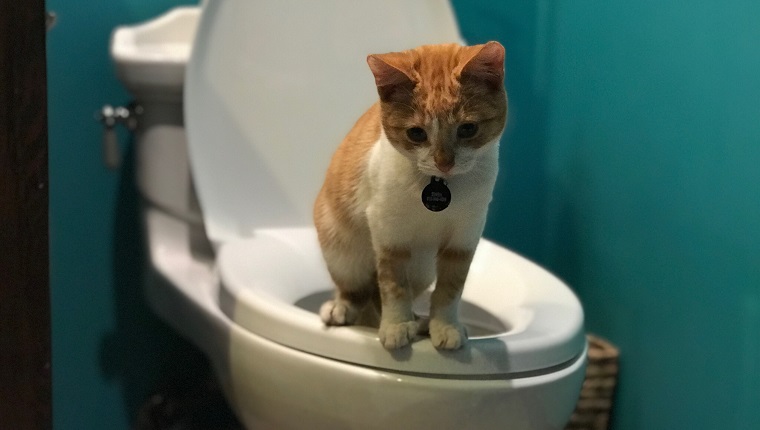The Dangers of Flushing Cat Poop Down Your Toilet - Advice for Safer Handling
The Dangers of Flushing Cat Poop Down Your Toilet - Advice for Safer Handling
Blog Article
How do you feel when it comes to How to Dispose of Cat Poop and Litter Without Plastic Bags?

Introduction
As pet cat proprietors, it's essential to bear in mind how we deal with our feline close friends' waste. While it may appear convenient to purge pet cat poop down the toilet, this method can have detrimental effects for both the environment and human health.
Environmental Impact
Purging cat poop presents harmful pathogens and parasites right into the supply of water, positioning a substantial threat to marine environments. These pollutants can adversely influence marine life and compromise water high quality.
Health and wellness Risks
Along with ecological worries, purging feline waste can likewise position health and wellness dangers to people. Feline feces might include Toxoplasma gondii, a parasite that can cause toxoplasmosis-- a potentially severe ailment, particularly for expectant females and individuals with weakened immune systems.
Alternatives to Flushing
The good news is, there are safer and more liable ways to take care of cat poop. Consider the complying with choices:
1. Scoop and Dispose in Trash
One of the most typical technique of disposing of pet cat poop is to scoop it right into an eco-friendly bag and toss it in the garbage. Make sure to make use of a committed trash scoop and dispose of the waste quickly.
2. Usage Biodegradable Litter
Select naturally degradable feline clutter made from materials such as corn or wheat. These trashes are eco-friendly and can be safely dealt with in the garbage.
3. Bury in the Yard
If you have a yard, think about hiding feline waste in a designated area far from veggie yards and water sources. Be sure to dig deep sufficient to stop contamination of groundwater.
4. Mount a Pet Waste Disposal System
Buy an animal garbage disposal system particularly created for cat waste. These systems make use of enzymes to break down the waste, minimizing odor and ecological impact.
Conclusion
Accountable pet ownership prolongs past giving food and sanctuary-- it also entails appropriate waste management. By avoiding flushing feline poop down the toilet and opting for alternative disposal techniques, we can decrease our environmental impact and protect human health and wellness.
Why Can’t I Flush Cat Poop?
It Spreads a Parasite
Cats are frequently infected with a parasite called toxoplasma gondii. The parasite causes an infection called toxoplasmosis. It is usually harmless to cats. The parasite only uses cat poop as a host for its eggs. Otherwise, the cat’s immune system usually keeps the infection at low enough levels to maintain its own health. But it does not stop the develop of eggs. These eggs are tiny and surprisingly tough. They may survive for a year before they begin to grow. But that’s the problem.
Our wastewater system is not designed to deal with toxoplasmosis eggs. Instead, most eggs will flush from your toilet into sewers and wastewater management plants. After the sewage is treated for many other harmful things in it, it is typically released into local rivers, lakes, or oceans. Here, the toxoplasmosis eggs can find new hosts, including starfish, crabs, otters, and many other wildlife. For many, this is a significant risk to their health. Toxoplasmosis can also end up infecting water sources that are important for agriculture, which means our deer, pigs, and sheep can get infected too.
Is There Risk to Humans?
There can be a risk to human life from flushing cat poop down the toilet. If you do so, the parasites from your cat’s poop can end up in shellfish, game animals, or livestock. If this meat is then served raw or undercooked, the people who eat it can get sick.
In fact, according to the CDC, 40 million people in the United States are infected with toxoplasma gondii. They get it from exposure to infected seafood, or from some kind of cat poop contamination, like drinking from a stream that is contaminated or touching anything that has come into contact with cat poop. That includes just cleaning a cat litter box.
Most people who get infected with these parasites will not develop any symptoms. However, for pregnant women or for those with compromised immune systems, the parasite can cause severe health problems.
How to Handle Cat Poop
The best way to handle cat poop is actually to clean the box more often. The eggs that the parasite sheds will not become active until one to five days after the cat poops. That means that if you clean daily, you’re much less likely to come into direct contact with infectious eggs.
That said, always dispose of cat poop in the garbage and not down the toilet. Wash your hands before and after you clean the litter box, and bring the bag of poop right outside to your garbage bins.
https://trenchlesssolutionsusa.com/why-cant-i-flush-cat-poop/

We had been shown that write-up about Don’t flush cat feces down the toilet from a friend on a different web page. Do you know anybody else who is curious about the niche? Do not hesitate to promote it. Many thanks for your time. Come back soon.
Schedule Appointment Report this page